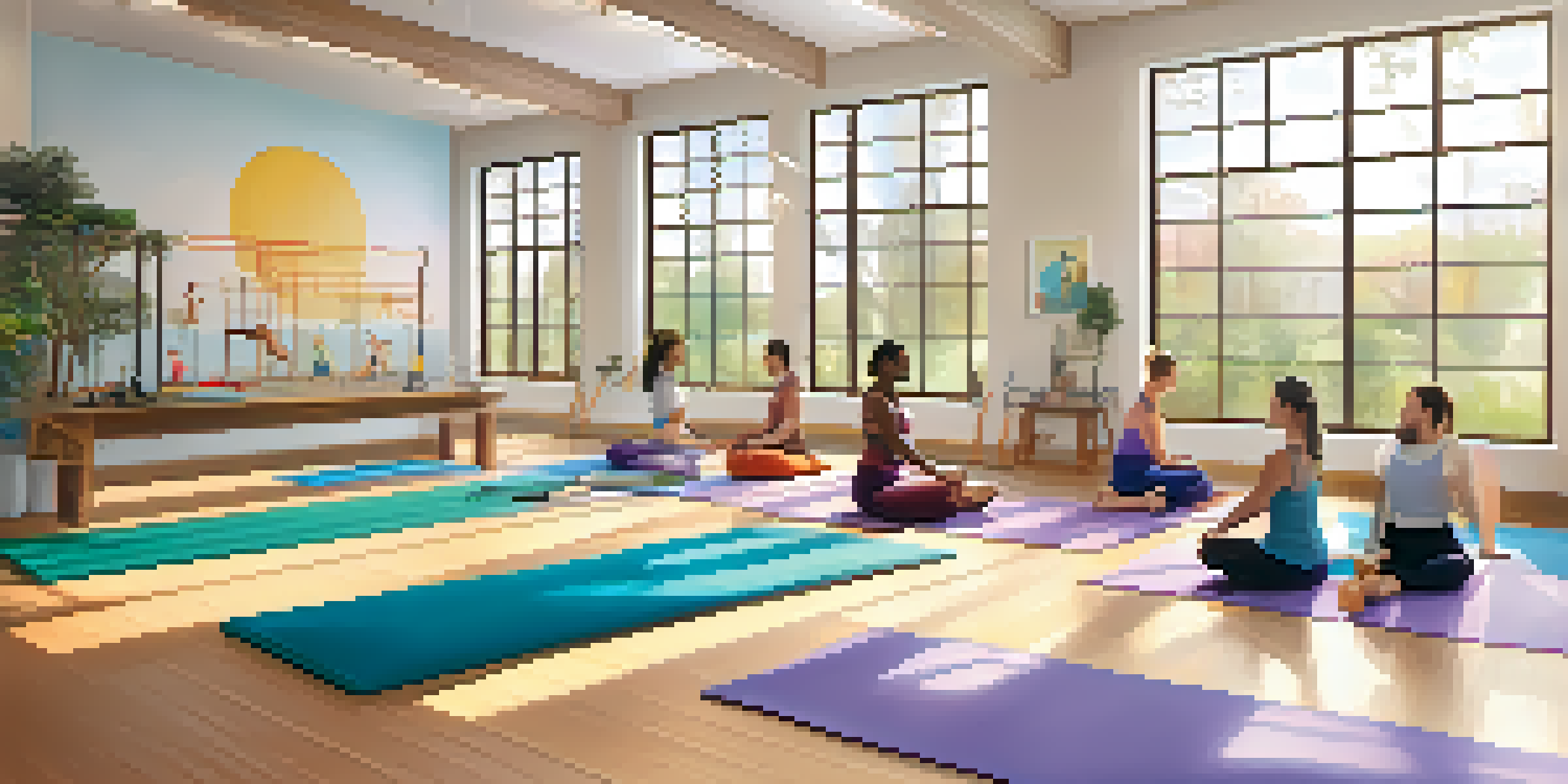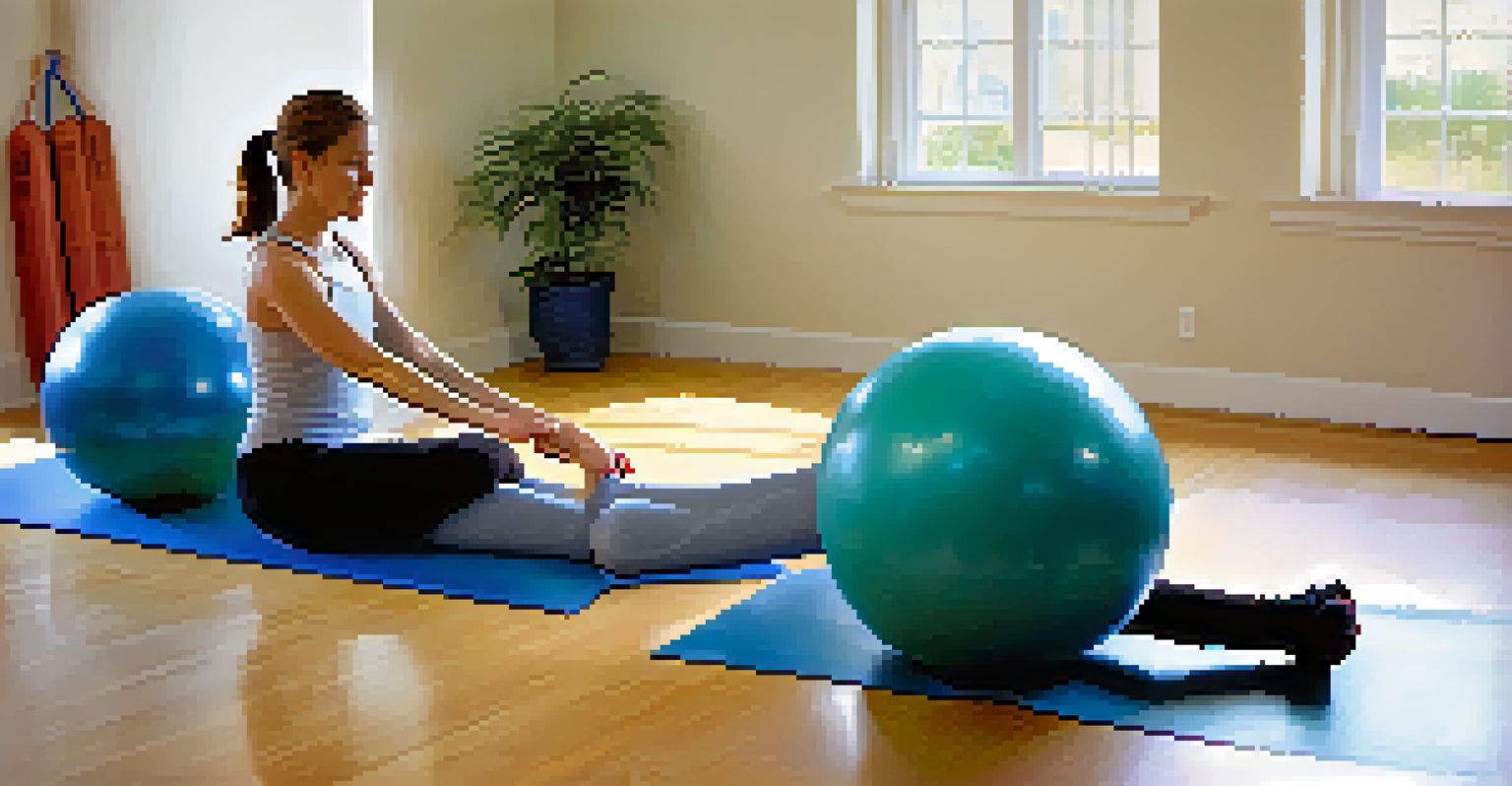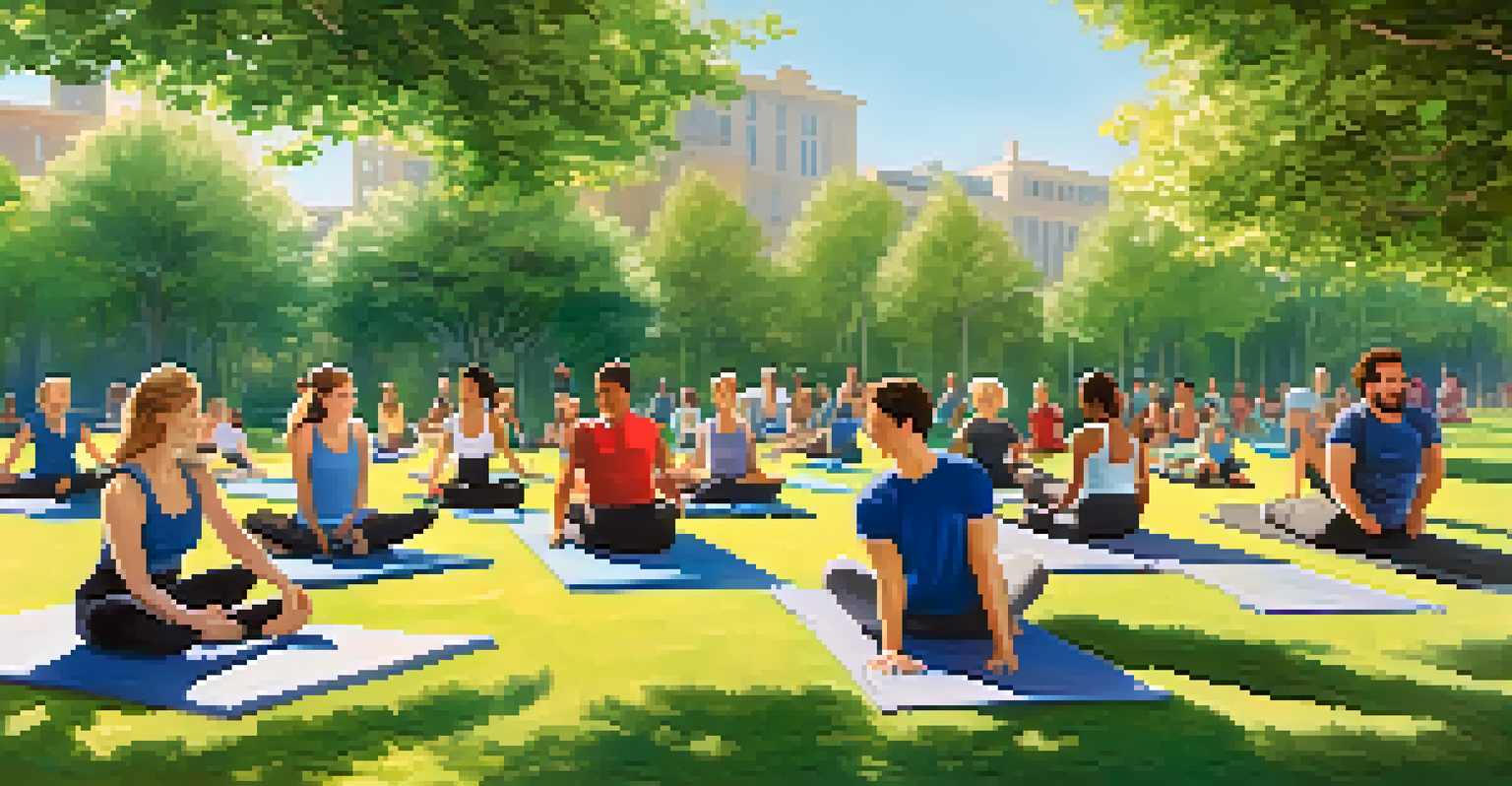Adaptation of Pilates for Individuals with Special Needs

Understanding the Basics of Pilates for Special Needs
Pilates is a low-impact exercise system that focuses on strengthening muscles while improving postural alignment and flexibility. For individuals with special needs, adapting these movements can enhance physical wellbeing and boost confidence. It's essential to recognize that everyone has unique challenges, and Pilates can be modified to suit various abilities and goals.
The greatest discovery of my generation is that a human being can alter his life by altering his attitude.
By incorporating modifications, we can ensure that Pilates remains accessible and beneficial for everyone, regardless of their physical or cognitive challenges. The key is to focus on the individual's strengths and limitations, providing a safe space for exploration and growth. This approach not only promotes physical health but also fosters a sense of community and belonging.
In this article, we'll explore various adaptations, techniques, and tips that can help instructors and caregivers effectively introduce Pilates to individuals with special needs. By understanding these principles, we can create an inclusive environment that encourages participation and personal growth.
Key Principles of Adapting Pilates Exercises
When adapting Pilates exercises, it's crucial to focus on key principles such as safety, personalization, and gradual progression. Safety should always be the top priority, ensuring that the individual feels secure and comfortable during each session. This might mean using props or adjusting the intensity of movements to prevent strain or injury.

Personalization involves tailoring exercises to the individual's specific needs, abilities, and goals. This might include modifying a standard Pilates move to accommodate limited mobility or providing additional support for someone with balance issues. By customizing the workout, we can help individuals experience success and enjoyment.
Adapting Pilates for Individual Needs
Pilates can be modified to accommodate various physical and cognitive challenges, ensuring accessibility for everyone.
Lastly, gradual progression is essential in building confidence and competence. Start with basic movements and gradually introduce more complex exercises as the individual becomes comfortable. This step-by-step approach not only enhances physical ability but also instills a sense of achievement and motivation.
Using Props and Equipment for Support
Props and equipment can significantly enhance the Pilates experience for individuals with special needs. Items like resistance bands, yoga blocks, and stability balls can provide additional support and help modify exercises. For example, using a stability ball can improve balance and core strength while offering a sense of security for those who may struggle with traditional movements.
Strength does not come from physical capacity. It comes from an indomitable will.
Incorporating props also allows for creative adaptations that cater to each person's unique abilities. For instance, a chair can be used to perform seated Pilates exercises, making it easier for those with mobility challenges to participate. This versatility not only keeps workouts engaging but also encourages individuals to explore their capabilities.
Moreover, props can foster a sense of independence, allowing individuals to take ownership of their practice. By learning to modify movements with appropriate tools, they can feel empowered to engage in their fitness journey while developing a deeper connection to their body.
The Importance of Breathing Techniques
Breathing is a fundamental aspect of Pilates that can be particularly beneficial for individuals with special needs. Proper breathing techniques help facilitate movement, improve relaxation, and enhance focus. Teaching breath awareness can also assist in calming the mind and reducing anxiety, which is especially valuable for those facing sensory sensitivities or emotional challenges.
In Pilates, breath is often coordinated with movement, creating a rhythmic flow that enhances the overall experience. For individuals who may have difficulty with coordination, breaking down the breathing patterns and practicing them separately can be helpful. This allows them to develop a deeper understanding of how breath supports their movements.
Importance of Breathing Techniques
Proper breathing techniques in Pilates enhance movement, promote relaxation, and foster mindfulness, especially for individuals with special needs.
Encouraging individuals to focus on their breath can also promote mindfulness and body awareness. This practice can lead to increased self-acceptance and confidence, as they learn to listen to their bodies and honor their limitations. Ultimately, incorporating breathing techniques into Pilates can transform the experience into a holistic practice that nurtures both body and mind.
Creating an Inclusive and Supportive Environment
Creating a welcoming and inclusive atmosphere is essential for individuals with special needs to feel comfortable participating in Pilates. This starts with understanding the unique challenges they may face and fostering an environment of empathy and patience. Instructors should communicate openly, encouraging individuals to share their needs and preferences.
Supportive language can go a long way in building confidence. Instead of focusing on what someone cannot do, highlight their strengths and progress. Positive reinforcement and encouragement can motivate individuals to push their boundaries while feeling valued and respected.
Additionally, involving family members or caregivers in the sessions can provide extra support and understanding. This collaborative approach not only enhances the individual's experience but also builds a sense of community where everyone feels included and empowered to thrive.
Incorporating Mindfulness and Relaxation Techniques
Mindfulness and relaxation techniques are vital components of a well-rounded Pilates practice, especially for individuals with special needs. Incorporating these practices can help manage stress, improve focus, and promote emotional well-being. Techniques like guided imagery or gentle stretching can create a calming environment that encourages relaxation and self-discovery.
One effective way to introduce mindfulness is through short meditation sessions at the beginning or end of a Pilates class. These moments of stillness allow individuals to connect with their breath and body, fostering a sense of presence and awareness. As they learn to focus inward, they can also develop coping strategies for navigating daily challenges.
Creating an Inclusive Environment
Fostering a supportive and welcoming atmosphere encourages individuals with special needs to engage in Pilates and thrive in their fitness journey.
Furthermore, relaxation techniques such as progressive muscle relaxation can help individuals release tension and become more attuned to their bodies. This awareness can enhance their Pilates practice, allowing them to move with greater ease and confidence. Ultimately, combining mindfulness with Pilates can create a transformative experience that nurtures both physical and mental health.
Success Stories: Real-Life Examples of Adaptation
Success stories can inspire and motivate both instructors and individuals with special needs. For instance, a young woman with cerebral palsy found newfound strength and coordination through adapted Pilates exercises. By working closely with her instructor, they created a custom routine that focused on her goals and abilities, leading to remarkable progress over time.
Similarly, a group of individuals with autism discovered the benefits of Pilates in improving their focus and social skills. By participating in group classes, they not only gained physical strength but also developed friendships and a supportive community. These stories highlight the profound impact that tailored Pilates programs can have on individuals with varying challenges.

Sharing these success stories can encourage others to explore adapted Pilates and remind everyone that progress comes in many forms. Whether it's physical, emotional, or social growth, the journey is unique for each person, and celebrating these achievements is essential in fostering a sense of belonging and empowerment.